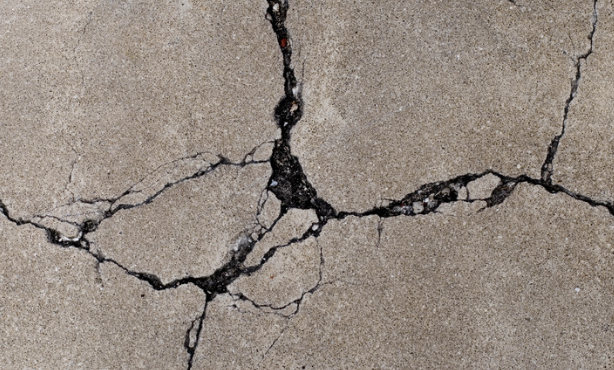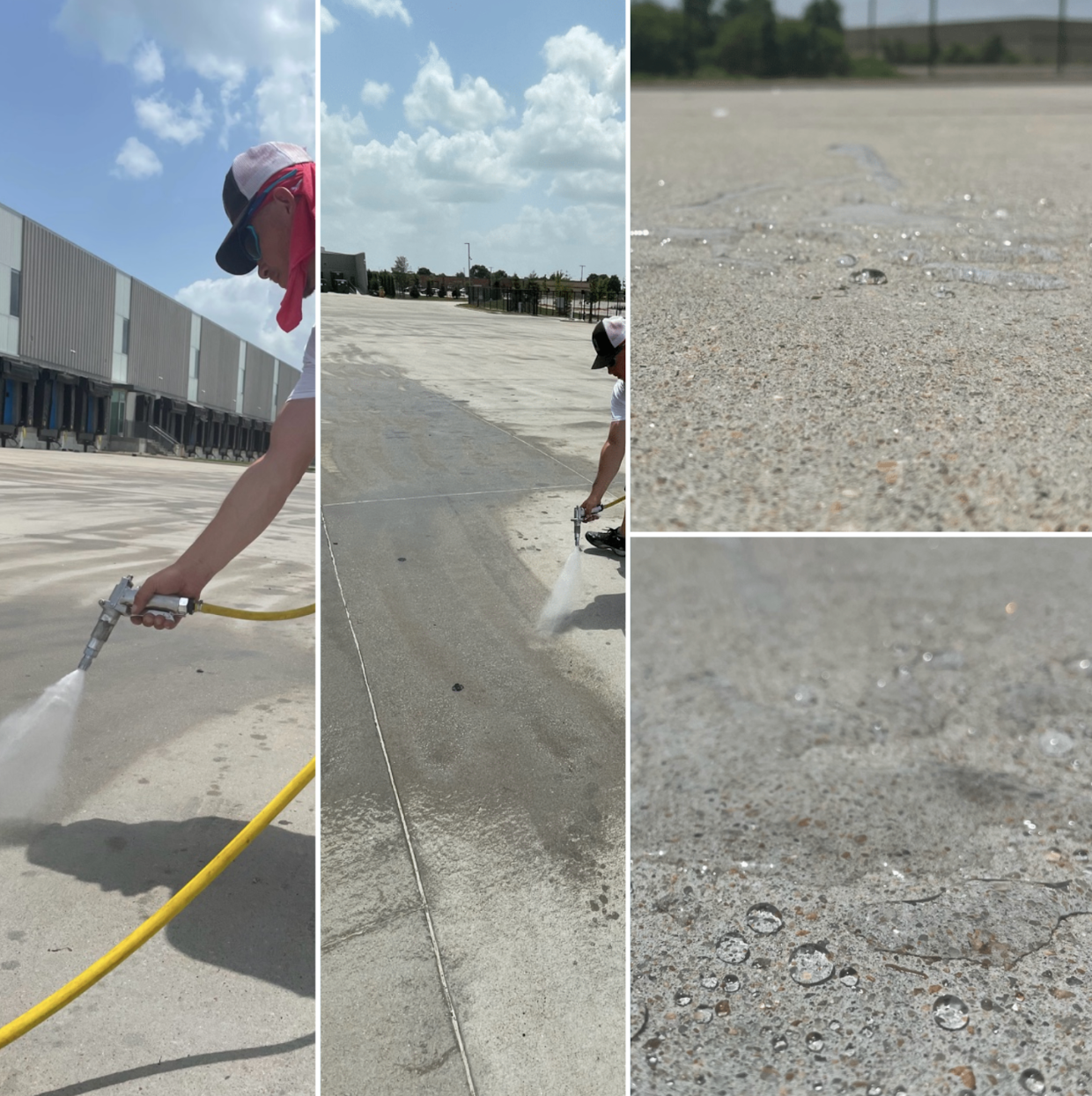How to Prevent Spalled Concrete - Salt Gaurd
Want to mitigate concrete damage in your parking lot next spring?
During the winter, rock salt is typically sprayed on roads and driveways to melt ice and snow. While this method is effective for melting ice and snow, the question remains will salt damage your concrete? Rock salt does in fact cause major damage to concrete parking lots, sidewalks, and walkways. Spalled concrete does not appear as a result of normal wear and tear; salt damages the concrete over time causing corrosion beneath the surface, resulting in cracked and crumbling concrete along with rust on rebars.

What causes spalled concrete?
Concrete is a porous material that readily absorbs water. During the winter, the water absorbed into the concrete freezes but this does not inflict the majority of damage to the concrete. The main culprit here is the use of rock salt that prevents the formation of ice and causes concrete to rapidly deteriorate. Similarly, high levels of sodium chloride can cause concrete to crumble and discolor over time.
The Chemical Effect of Salt Damage on Concrete
Salt damage to concrete is caused primarily by chemicals that react with the road or pavement surface. The calcium hydroxide in the concrete reacts with the calcium chloride in salt to form calcium oxychloride (CAOXY), which initiates erosion. CAOXY crystals expand when they form inside the concrete, creating internal cracks, and crumbles. This results in increased salt damage to concrete parking lots and sidewalks which is intensified by the freeze-thaw cycle. Salt lowers the freezing point of water and raises the pressure of frozen water, further enhancing the effect of the freeze-thaw cycle. When ice melts, it transports more water than normal. In colder temperatures, the extra water adds more ice to the concrete upon refreezing, increasing hydraulic pressure.
Avoid Costly Repairs with Preventative Salt Gaurd Coatings
When it comes to coatings, more often than not we tend to conflate a change in color or appearance with protection. Choosing the right product is critical when your main goal is protection. This is very evident when sealing your exterior concrete. Typical silane siloxane sealant will not change the appearance in any fashion, not color or gloss. However; it works. It provides a barrier against salt and water intrusion, mitigating concrete failures or costly replacement. Sealing concrete is typically $1.00 or less per square foot, whereas replacing concrete can run $16-$20 a square foot.
Contact our Professional Applicators
An application of salt guard every 2 years can prevent major damage to your concrete. The best time to apply a salt guard is from late summer to late fall when the surface temperature is above 40 degrees. At Major Painting, our skilled commercial applicators are here to help you achieve a quality, lasting application for your exterior surfaces. For more tips on preventative maintenance, or to learn more about our commercial and residential painting services, contact us today!
About the author
Chase DeRousse is the Vice President of Painting at Major Painting and strives to deliver quality craftsmanship coupled with superior customer service, creating a unique and pleasant experience for all Major Painting customers, no matter the size of the project. Chase also holds an active Class A General Contracting License.
Chase has won multiple accolades recognizing his leadership and excellence in the painting industry including awards from the Painting Contractor Association (PCA), Business Owners and Managers Association (BOMA), and Institute of Real Estate Management (IREM).
